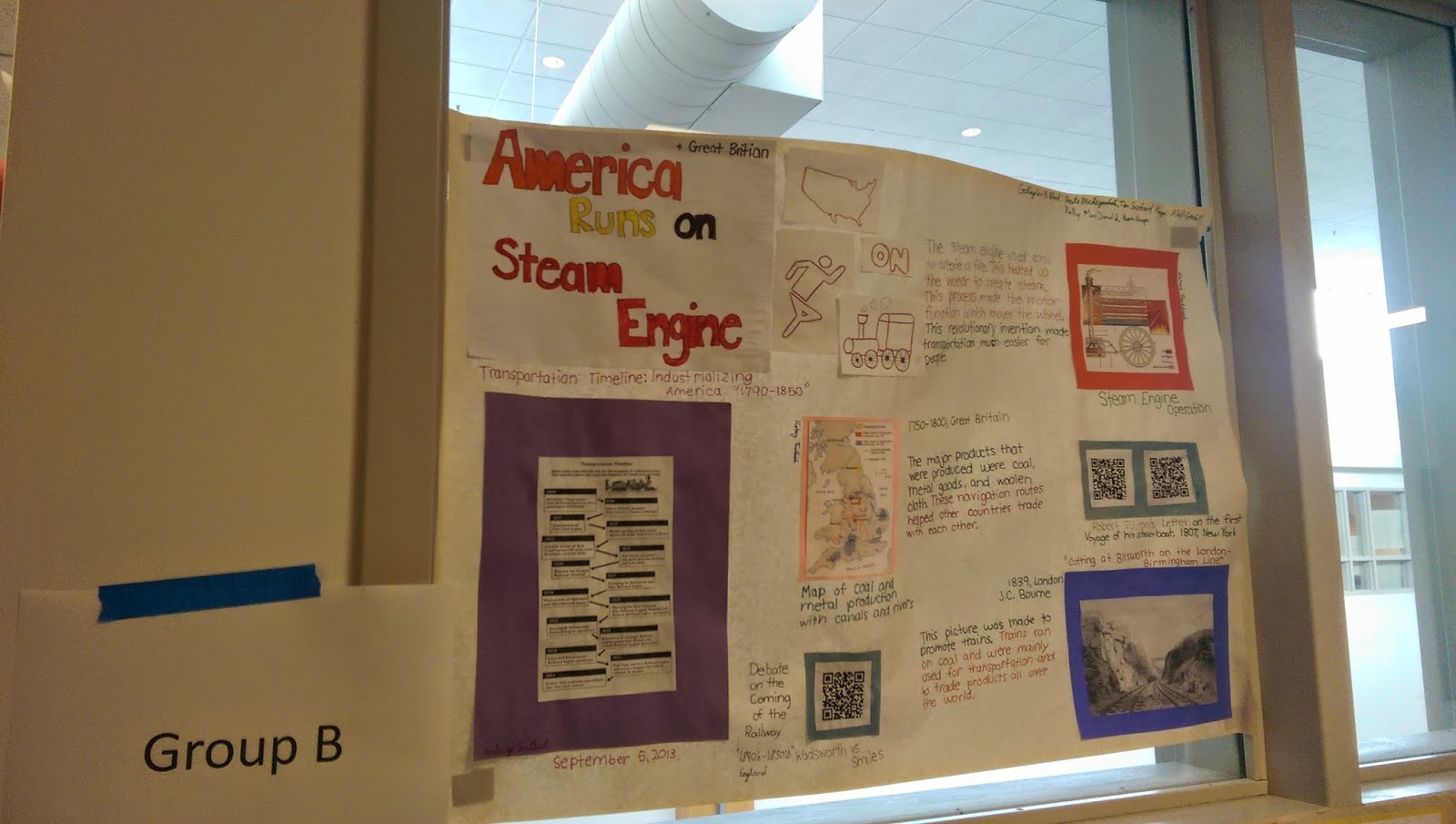Curating an exhibit is tough work. You have to consider
which way someone is going to read something (usually left to right), choose
the key documents and pictures to display, write an informative and catchy
title, advertise the exhibit, write short descriptions of the items, and take
care of several other small details that can really affect what people think of
your exhibit.
Earlier
this week I was put into a group with four of my classmates. We were told to learn
about the Industrial Revolution and how people were affected. We received
several documents and pictures which we analyzed together. Our analysis process
consisted of answering several questions about each document. These questions
include the author, date, location, why it was created, and what a visitor
should learn from this. The analysis process of curating an exhibit is crucial
because without complete knowledge of the sources you can't fully explain
their contents to a visitor. Our exhibit (pictured below) shows that the increase in
demand for cotton led to an increase in slavery. Our documents include a map of
the cotton trade, the title page for a teaching kit, statistics about cotton
production in Lowell and the slave population, a graph showing slave
populations, a picture of the Boott Cotton Mill, and a diagram of The Water
Frame. Our title was “Prosperity At The Cost Of People.” We chose to use this
title instead of the several others that we came up with because it best
captured the theme of our poster. Unfortunately, we couldn’t come up with super clever titles. We hope that people who look at our exhibit will learn
about how slave populations skyrocketed in the United States as the demand for
cotton in the mills increased during the Industrial Revolution. Here is a
picture of our completed poster.
The following pictures are of my classmates' exhibits which
touch on other aspects of the Industrial Revolution.
I learned a lot from each of these posters. The first poster that I looked at was titled "Is The Pain Worth The Gain?" I really liked this title because I knew exactly what I was about to learn about without looking at anything else. I learned about the horrible job the children did of pulling a cart thru a tiny tunnel. I also learned that a good portion of the workers in these cotton factories were under 10 years old. At the next exhibit I learned about how polluted the rivers were because of the new machines and factories. I also learned about how neighborhoods were being destroyed with these new factories. The next exhibit talked about the steam engine, which is still used in current times. I learned about how the steam engines work, and about how goods reached new places because of the trains that ran on the steam engine. The final exhibit that I visited mentioned the loom and had a nice timeline of how and when the loom was improved upon. The title was very creative and a bar graph helped me visualize the population increase in London. I had a great time learning using my classmates' work and I look forward to future projects like this one.
I learned a lot from each of these posters. The first poster that I looked at was titled "Is The Pain Worth The Gain?" I really liked this title because I knew exactly what I was about to learn about without looking at anything else. I learned about the horrible job the children did of pulling a cart thru a tiny tunnel. I also learned that a good portion of the workers in these cotton factories were under 10 years old. At the next exhibit I learned about how polluted the rivers were because of the new machines and factories. I also learned about how neighborhoods were being destroyed with these new factories. The next exhibit talked about the steam engine, which is still used in current times. I learned about how the steam engines work, and about how goods reached new places because of the trains that ran on the steam engine. The final exhibit that I visited mentioned the loom and had a nice timeline of how and when the loom was improved upon. The title was very creative and a bar graph helped me visualize the population increase in London. I had a great time learning using my classmates' work and I look forward to future projects like this one.




No comments:
Post a Comment